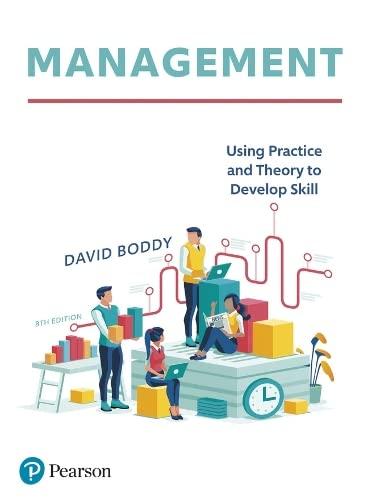Answered step by step
Verified Expert Solution
Question
1 Approved Answer
As the number of mergers and acquisitions has continued to rise, it has become evident that merging two different organizational cultures is not easy. Also,
As the number of mergers and acquisitions has continued to rise, it has become evident that merging two different organizational cultures is not easy. Also, many anticipated benefits of the mergers are not realized because of different organizational and human resource cultures. According to one national estimate, 70% of all mergers and acquisitions do not meet expectations, and just 15% of all combinations achieve their stated financial objectives. One example from the health-care industry illustrates the problems. Two large home-health-care organizations, both headquartered in southern California, had been fierce competitors. Homedco and Abbey Healthcare Group decided that rather than continuing to compete, they could strengthen their market positions by merging to create one large firm, Apria Healthcare Group. Together, they planned to expand their home health services nationwide as the effects of managed care spread. Yet three years later the stock value of Apria had declined by 25%, and earnings fell. How far Apria declined was soon evident; when efforts began to find another company to take over the firm, few buyers were interested. What happened was primarily due to operational problems caused by the merger. Those issues had not been resolved because of internal conflict between the ex-Homedco and Abbey Healthcare executives and employees. Ultimately, the Board of Directors, which was evenly split, accepted the need to remove Timothy Aitken, former CEO of Abbey Healthcare, and have Jeremy Jones from Homedco as CEO. It was obvious from the beginning that the organizational cultures were very different. Whereas Homedco had a more formalized structure with more centralized decision making, Abbey Healthcare had very decentralized decision making, and branch managers had significant authority. Also, merging computer and billing systems by using the Abbey Healthcare system meant that employees from Homedco had to be trained, which did not happen fast enough. As a result, numerous billing errors and the resulting complaints and phone calls from unhappy customers overwhelmed Apria customer service departments. To save costs and eliminate duplication of jobs, about 14% of the employees in the combined company lost jobs. But the greatest number of those cut was former Abbey employees. For those remaining, it appeared that most Homedco managers were not affected as much as the Abbey Healthcare managers. For instance, only 6 of the 21 regional managers were formerly with Abbey Healthcare, which caused most of the best-performing Abbey sales representatives to quit. Even changing some basic HR policies caused problems. For example, when Homedco HR policies were extended into Abbey offices, a new dress code and time-recording procedures irritated many former Abbey workers. A significant number of them left in the first year. The level of conflict was so severe that employees from one firm referred to those from the other company as "idiots" and refused to return phone calls from employees with the other firm. Finally, both Aitken and Jones left the firm, and a new executive team has been struggling to rebuild Apria. Instead of being a healthy merger, it turned into the "merger from hell." Unfortunately, this situation is not unusual; similar conflicting cultures have diminished the effectiveness of mergers by firms in other industries as well. One instance is a merger of two financial institutions, Society Corporation and Key Corporation (KeyCorp). Since the merger, the combined firm has grown only half as fast as other banks its size and has cut 5,000 employees. In this case, as well as the Apria one, it is evident that human resource issues and organizational culture incompatibilities can destroy the value of mergers that appear to be logical from a broad business strategy perspective.32 Questions 1. Describe how analyses of human resource issues should have been done prior to the Apria merger. 2. Given the problems both KeyCorp and Apria have, what actions could be taken to begin creating better organizational cultures
Step by Step Solution
There are 3 Steps involved in it
Step: 1

Get Instant Access to Expert-Tailored Solutions
See step-by-step solutions with expert insights and AI powered tools for academic success
Step: 2

Step: 3

Ace Your Homework with AI
Get the answers you need in no time with our AI-driven, step-by-step assistance
Get Started


